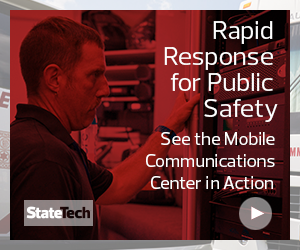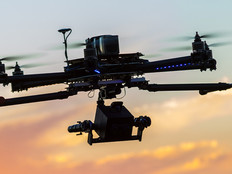MORE FROM STATETECH: Discover how 5G networks will impact smart cities.
What Are the Benefits and Challenges of 5G Network Slicing?
Blair says network slicing will enable Verizon to support more use cases for public safety and “be more dynamic with the use-case support.”
Network slicing allows for public safety agencies to optimize network functions like speed, capacity, coverage and connectivity, Curran says. Today, Verizon and other wireless carriers can prioritize public safety network traffic. However, he adds, the variables of that prioritization are limited on today’s mobile networks, since it cannot be engineered end to end in a dynamic way.
“With network slicing, I believe that’s going to create much more robust capabilities so that I can offer many more variables of quality of service to our customers,” he says. Those variables will not be predetermined or pre-engineered as much.
Additionally, network slicing allows the deployment of new services more quickly, according to Curran.
“They are completely isolated and therefore no network slice can interfere with traffic in another slice, thus lowering the risk of launching new services,” he says. “In 5G networks, the adoption of network slicing will also lead to more energy efficiency compared to older mobile networks.”
There are network security benefits as well, in that if an attacker breaches one network slice, the attack cannot spread beyond that slice to other slices, Curran adds. 5G network slicing can also provide increased guarantees about the confidentiality of data, Curran says. “The very act of segmentation ensures less leakage,” he says. “This is important, for instance, in the exchange of text messages, files and images between public safety officers.”
The challenges associated with network slicing are similar to many of the same challenges that exist today with network configuration, Blair says, adding that he is not sure network slicing will make them more difficult. “As the network capabilities now become more accessible, those challenges are going to feel more painful,” he says. “Whether that’s making sure you’re building the network to the right requirements or getting it the right certifications it needs so that you can provide different services, we have the same challenge today. I don’t see network slicing changing that. I think it’s going to change the need for those type of things being more broadly available.”
MORE FROM STATETECH: Discover the operational benefits of cutting-edge public safety tech.
How Can 5G Network Slicing Benefit Public Safety Agencies?
Network slicing will play a major role in 5G public safety networks “due to the multitude of use cases and new services it can support,” Curran says.
Since there are many different public safety communication use cases, “having an efficient method to provide for the varying performance requirements will allow operators to more easily” test and deploy new services for first responders.
For example, sensors deployed on emergency service vehicles may need low latency but not so much high network throughput, or a public safety video surveillance streaming service would require high throughput and is susceptible to latency, Curran notes.
“Here you can have two different 5G public safety communications networks delivered over the same common physical network on network slices optimizing the use of the underlying physical network,” he says.
Additionally, high network availability is essential to “ensure minimal service accessibility to critical infrastructures in case of a disaster as well,” Curran notes. “In some emergency communication services, such as public safety, first responders and hospitals need 99.999 percent availability. Networking slicing can lead to more resilient networks to provide this.”
Use Cases for 5G Network Slicing in Public Safety Communications
Today, Verizon and other carriers can offer first responders access to mission-critical push-to-talk calling service and can provide them with priority and pre-emption on networks so that their traffic is routed faster. However, network slicing will enable different flavors of those services, Blair says.
“I want to have IoT, but when I run my network, I want to be able say that this IoT use case is more important than this one, which is more important than this one,” he says. “I don’t have the ability to let you schedule that today and do that in a way where you could change that tomorrow if your needs changed. Those are the kind of capabilities that network slicing is going to allow us to deliver in the future.”
Curran agrees. “IoT devices such as security cameras, drones and smoke detectors are providing more of a role in public safety, and network slicing can provide an optimized network for each type of IoT device, which vary greatly in requirements,” he adds.
Network slicing would allow police departments to prioritize the traffic from specific video cameras that are monitoring an event, Blair says, and network slicing could provide a higher quality of service for that specific video stream. “Network slicing is going to allow me to do a much more sophisticated approach to an end-to-end experience,” he says.










